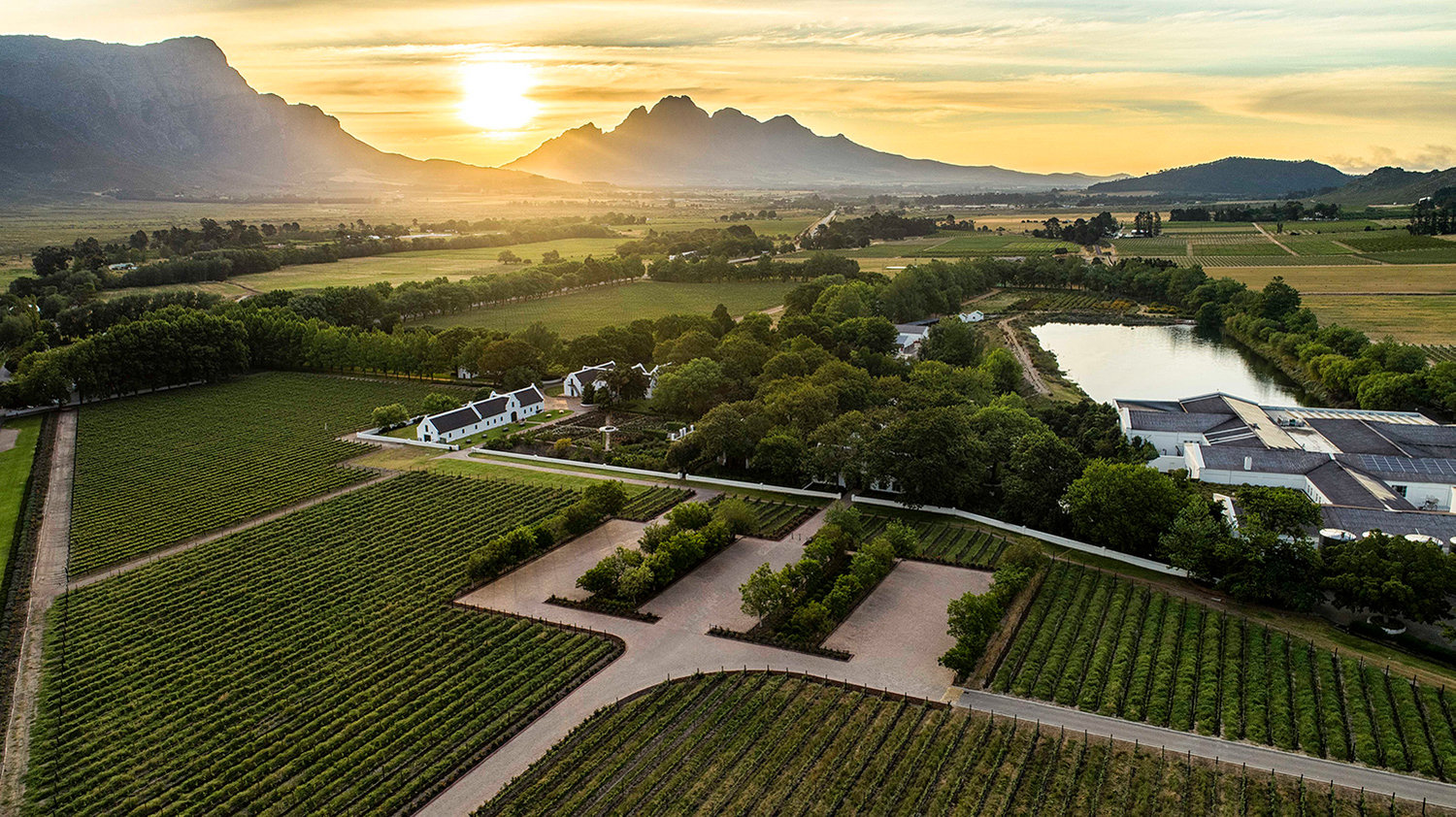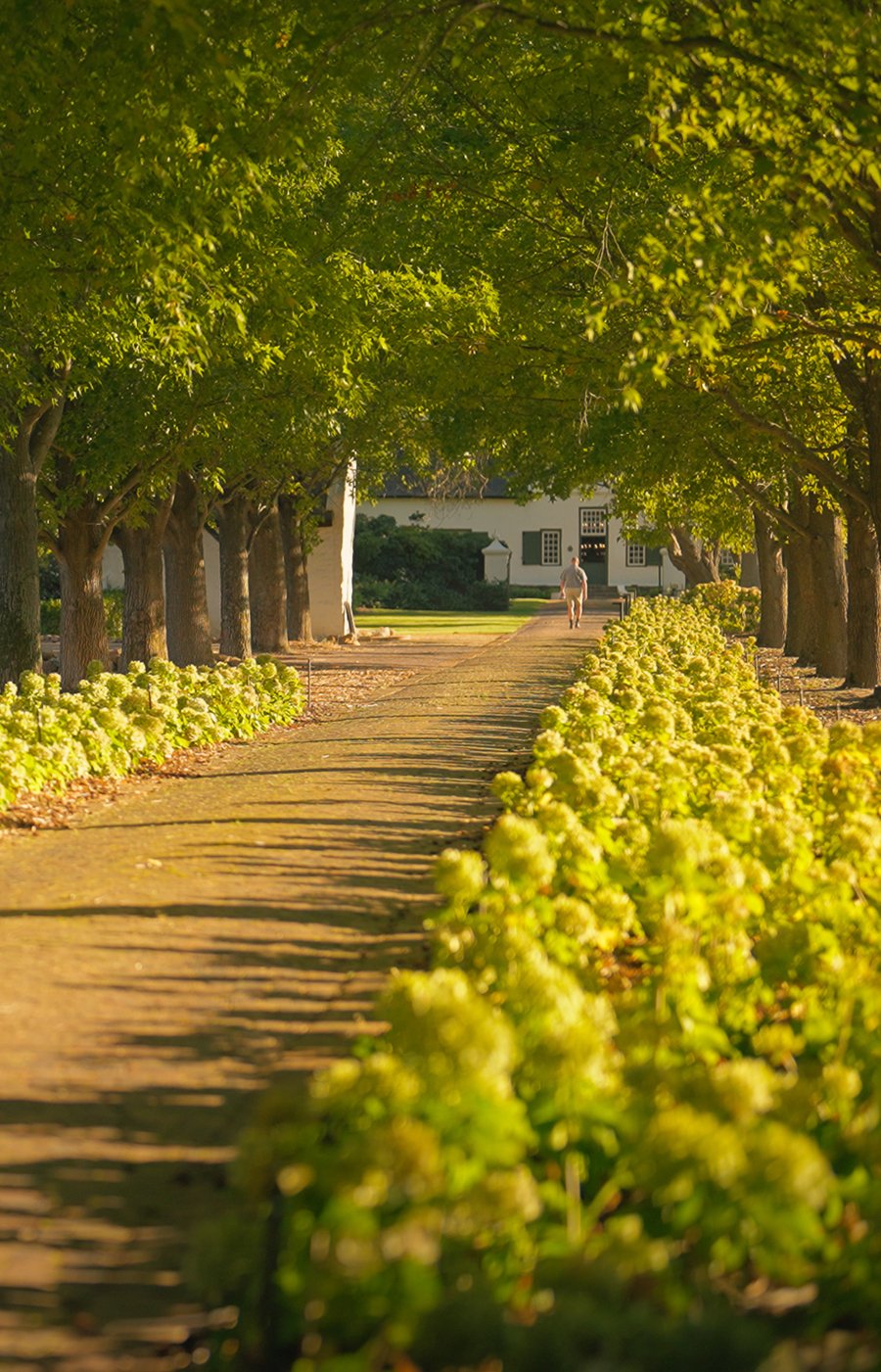Q&A with La Motte’s Edmund Terblanche
Over the course of his two-decade-long career at La Motte Wine Estate, Edmund Terblanche has not only become cellar master of one of South Africa’s most prestigious wineries, but one of the country’s leading authorities on Shiraz (he is chairman of Shiraz SA, South Africa’s official Shiraz association, after all), and even admits that if there’s one wine he’s snobbish about, it’s Shiraz. But making wine under the La Motte name – a winery with deep roots not only in Franschhoek but across the Cape Winelands from Botrivier to Walker Bay – means that Edmund’s knowledge of wine is not terroir specific, but rather holistic. So who better to ask what separates a Syrah from a Shiraz, what influences the price of wine, and why we should reconsider the blend?

Your background as a nature conservationist is quite unique for a winemaker. How does this chapter in your life influence your approach to wine?
I was never a nature conservationist! (laughs) That’s just something a journalist made up and the media went with it. No, my original intent was always to be a winemaker, but I was offered a bursary to do a course in city and district planning, so I took it. Part of it was nature conservation, but it had more to do with human behaviour. During my time in the military, however (military service was compulsory for all white South African males between 1967 and 1993), I was given a 2000-hectare stretch of land at SAS Saldanha to look after. I went to Elsenburg (the prestigious Stellenbosch-based school of winemaking) after that and found that a lot of the subjects overlapped. Winemaking is nature conservation to a large extent.
What influence does the surrounding fauna and flora have on a vineyard, particularly in the more recent, biodynamic approach to winemaking?
During my time at Elsenburg, any lecturer would have cautioned you against deliberately using other plants in the vineyard. They did research in Chile recently that showed how easily the flavours of neighbouring plants can influence the wine. Similarly, Australia offers a more extreme example, where they proved that a single eucalyptus leaf in a 500 kg crate of grapes can give the wine a distinct mint flavour, which you often find with Australian wines – particularly the reds. Even pollen, veld fires, ladybirds (who catch white lice, but give off a strong stench) and wooden vineyard posts (that are often treated with creosote) can influence the taste of wine, so we’re very careful about planting just anything in our vineyards. You have to do your research.
There are many approaches to winemaking – organic, biodynamic, integrated – but we consider our approach at La Motte to be biological. We use the most environmentally sustainable methods possible, but you have to remain sustainable as a winery too. In the end, the wine can’t suffer. In time, I believe the wine world will move towards an entirely natural way of making wine.
What makes Franschhoek wine unique?
The region is rich in fynbos, but it’s certainly not unique to the country. I think fynbos probably has an impact on all our wines, even if we don’t necessarily pick up on it. In the south of France they have similar plant life to fynbos called garrigue (wild-growing plants whose perfume – given off by leaves and needles – permeates the rocky soils in which the vineyards grow) that they’re convinced has an influence on the taste of the wine.
Perhaps more unique to Franschhoek is the sandy quality of the soil. On the plus side, it offers excellent drainage, but doesn’t retain moisture as well, so we depend on irrigation. But the soil, which is over 500 million years old (of the most ancient in the world) lends our wines a creaminess, an inherent sweetness, and a low tannin content, which in my opinion accounts for the fact that our wines are so drinkable.
You have been a winemaker at La Motte for almost 20 years. How has your approach to winemaking evolved during that time?
You learn a lot at college, but the truth is, the most valuable knowledge you gain is on the job. Most winemakers learn from their predecessors, which was certainly the case with me. I was fortunate to have worked with grapes from various regions across the Cape Winelands – and I’ve seen Sauvignon Blanc and Shiraz come a long way over that time. But where we initially harvested the grapes later in the season (the ripeness allowing for a riper, “friendlier”, but more generic product), I have since started harvesting earlier to better retain the grape’s unique identity. In my opinion, when you harvest a grape early and don’t get the desired result, it was probably a mistake to plant that varietal in the first place.
Shiraz or Syrah? What’s the difference?
There is no difference. Traditionally, France and America use the term Syrah, and Australia and South Africa use the term Shiraz. There are people who have tried to prove that the origin of the word Shiraz originated from the ancient Persian town of the same name… which was later proven wrong. But nowadays wine writers like to claim that winemakers choose the term Syrah to give their wine a more classic, Old World connotation. Classic wines are typically lower in alcohol, less woody, less fruit forward… but I’m generalising. On the other side of the spectrum, you get fruitier, riper, woodier, more alcohol… these qualities are seen as belonging to the more modern school of winemaking.
But as the French are starting to witness higher temperatures, their wines are becoming fruitier and higher in alcohol – but they cling to their classic-ness, even though these notions are not as clear cut anymore. Also, some winemakers truly believe that they’re making a classic wine, but when you taste it, it’s not the case at all. So in the end, whether a winemaker calls it Syrah or Shiraz, it won’t necessarily lead you to buy the right wine… or what you were expecting to buy at least.
What influences the price of a bottle of wine?
If you look at Hanneli R (La Motte’s flagship blend), for instance, we used only the best grapes from that vintage – usually a blend of Shiraz, Grenache and Petit Syrah. Added to that, it’s a very age-worthy wine. To most wine lovers, there’s a privilege to drinking a piece of history. There must be an element of rarity… of limited production. Not everyone can make the same wine, so there’s value to the story behind a wine – where it was grown (usually in a limited area, like a single slope of a particular mountain), what the conditions were that year, and how seldom the estate changes ownership (ensuring consistency). Over time, such a wine will attain iconic status, and over just a few years, will give you better returns than any trust ever could. In the end, though, the wine must be extraordinarily satisfying.
What’s next for La Motte?
We want to experiment with blends more, but it would mean educating the South African consumer first. Single varietals have become almost like brands here. A lot of people will say, “I’m a Shiraz person,” or, “I like anything but Chardonnay,” but what few South African wine drinkers realise is that some of the best wines in the world are blends.
Take Grenache, for instance. For whatever reason, it’s strange to the local consumer, but at one time, Grenache was the most planted varietal in the world because it’s often the most drinkable part of some of the world’s best wines. Châteauneuf-du-Pape, for instance, is Grenache based, and so is Côte du Rhône. Grenache often lends a blend that rose petal, almost red candy flavour. Blends are also inherently more complex because of all the different varietals in the wine. You don’t always know why they work or how they will age, but it’s infinitely intriguing.
What aspect of wine fascinates you the most?
After all this time, I still marvel at the fact that when you grow the same grape varietal in exactly the same way – but in three different regions – each wine will have a vastly different flavour profile and character. Other than that, I’m fascinated by the way a wine develops. It’s never the same. It’s alive, so you have to follow the wine and get to know it throughout its process.

LA MOTTE 2016 SYRAH
TASTING NOTES
- Syrah from Franschhoek contains a natural fruitiness that includes red berries and mulberry.
- The Durif provides colour, plum fruit and texture.
- One of the vineyard blocks well exposed to shade, yields black pepper spice, clearly noticeable on the palate.
- Wood flavours are well integrated and the palate has a creamy texture.
PAIRING SUGGESTIONS
The full-bodied character of this wine harmonises perfectly with rich, flavourful dishes, grilled foods (including grilled vegetables), game dishes (particularly those incorporating stewed fruit and sweet aromatic spice components), peppercorn-crusted steaks and barbecued meat in a sticky, sweet sauce. The wine’s abundant fruit also latches onto the sweetness in jellies, chutneys and berry sauces.














